




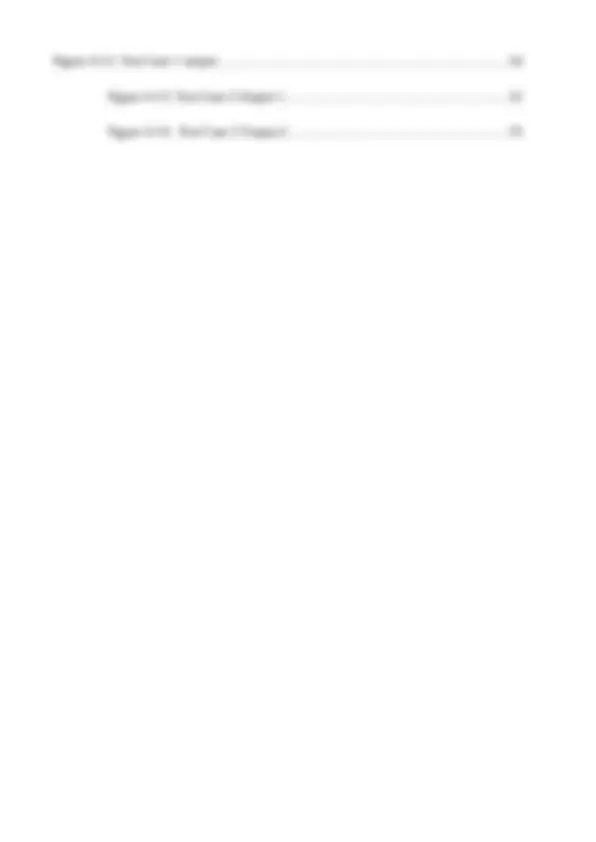



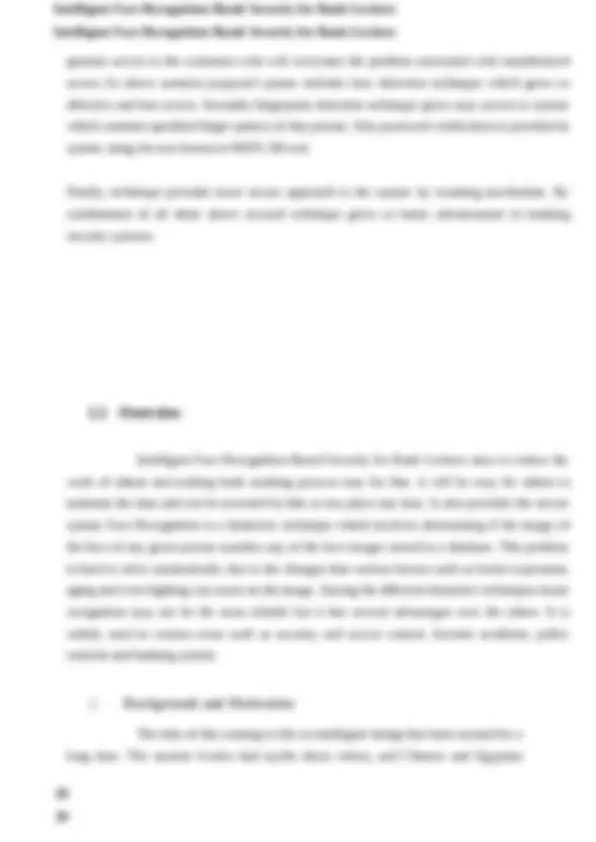


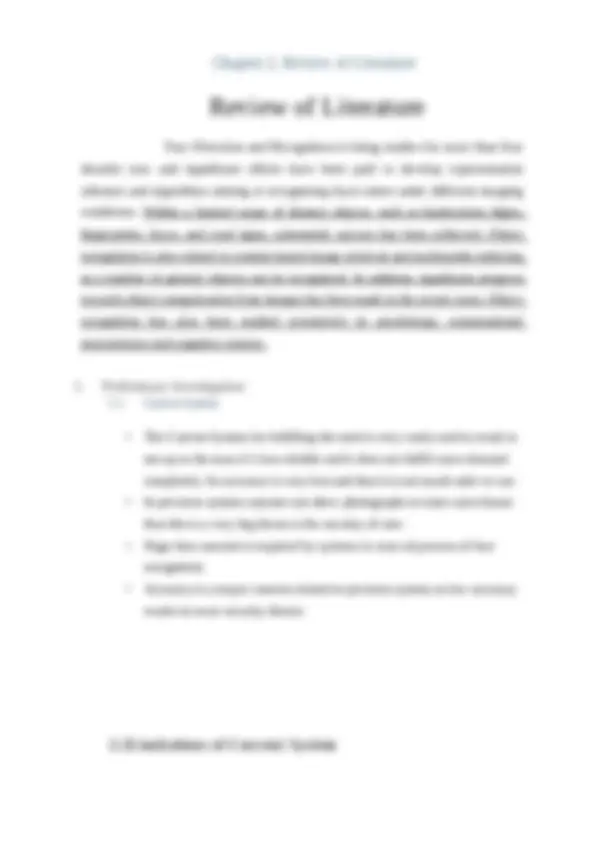






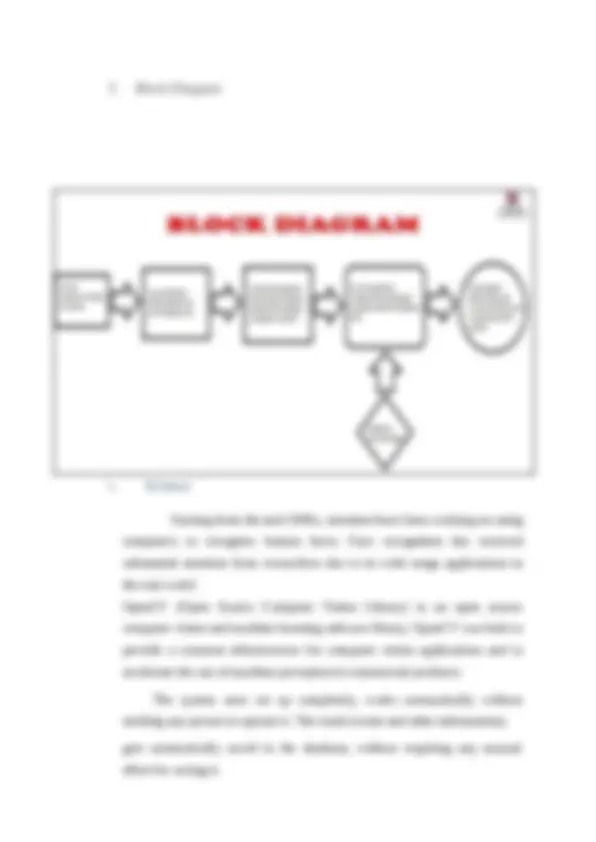





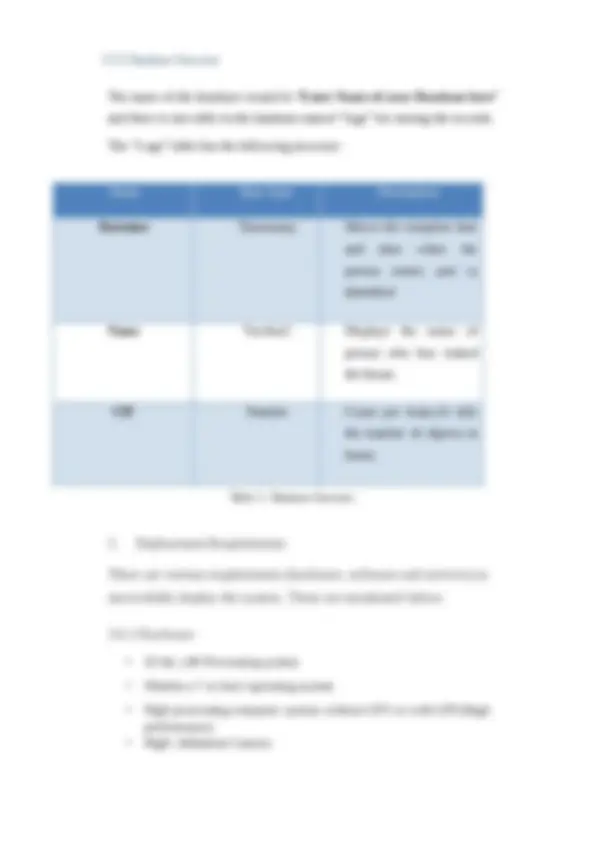


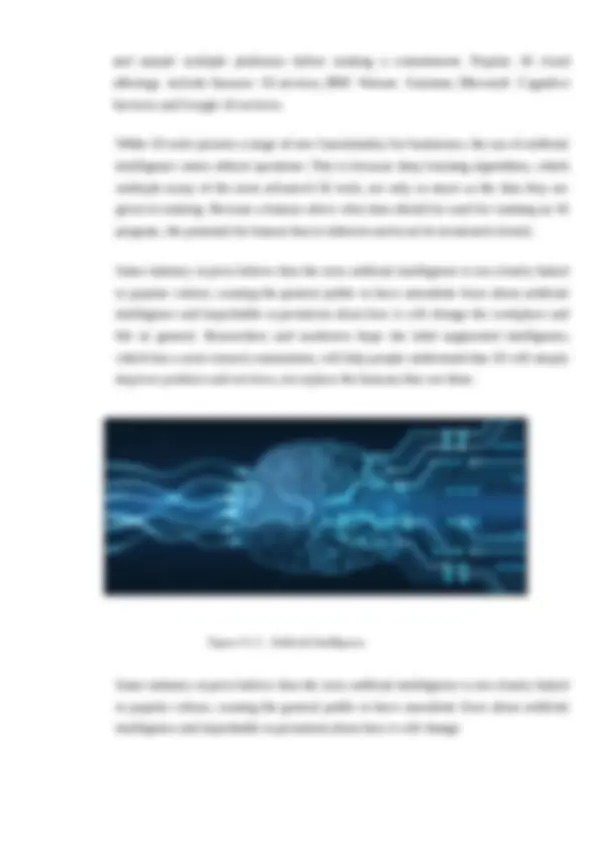





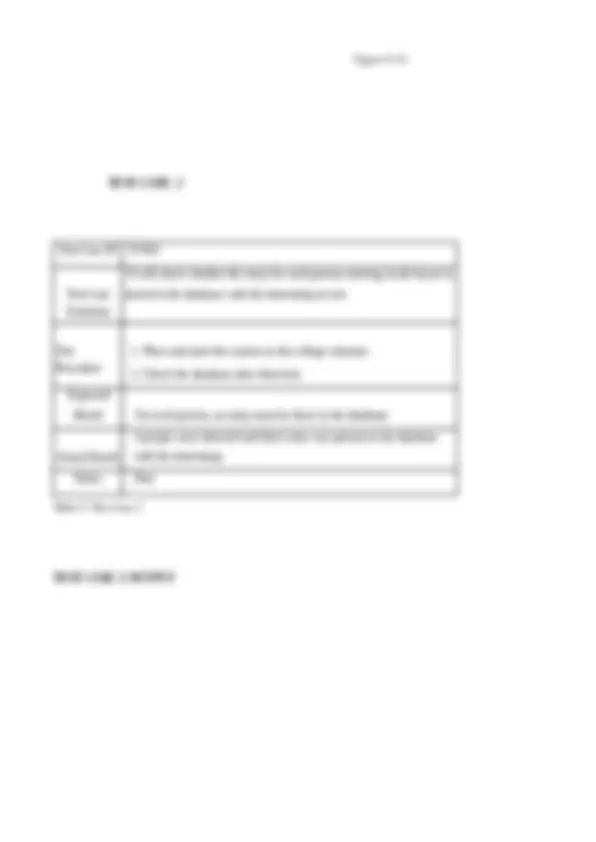



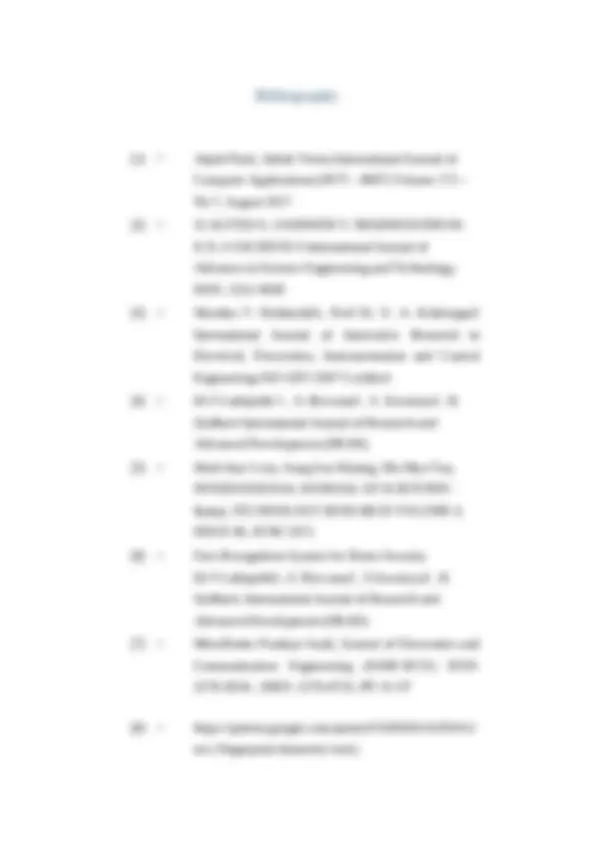






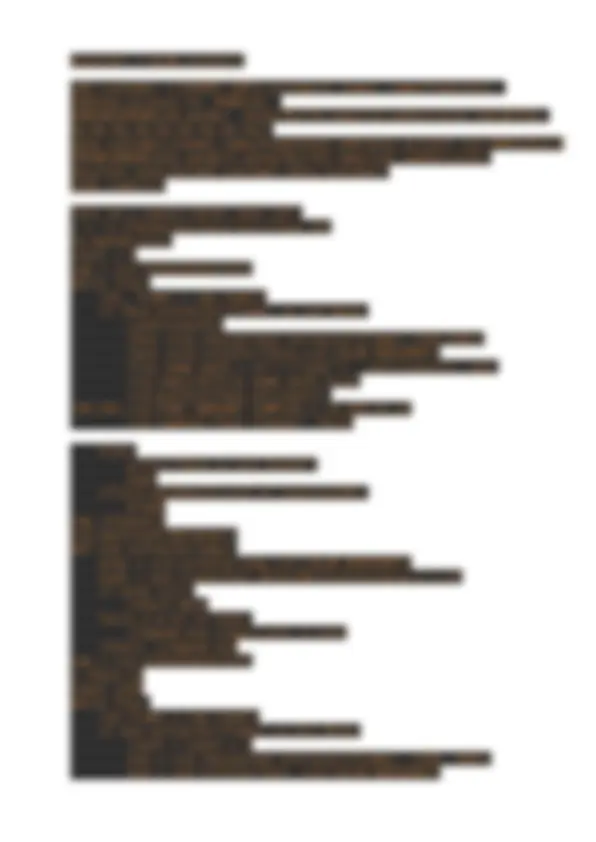


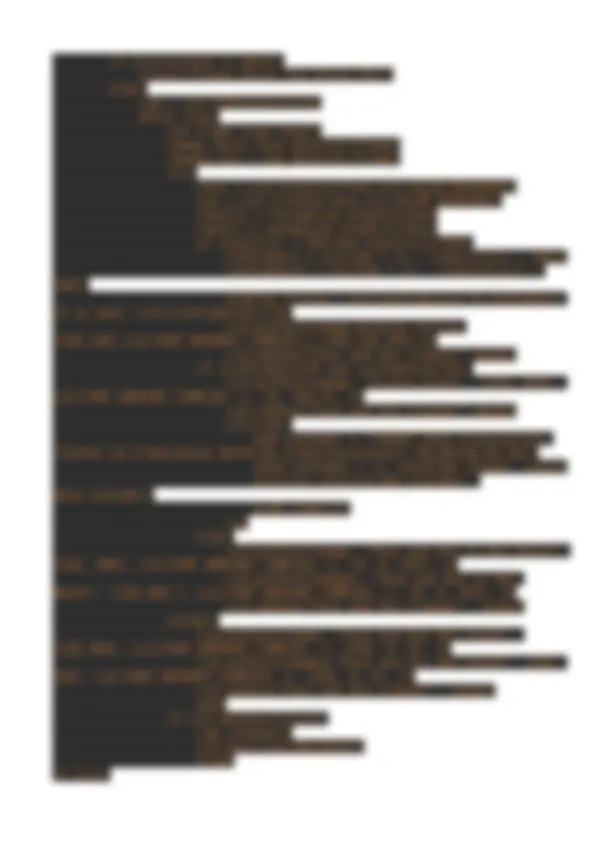



Study with the several resources on Docsity

Earn points by helping other students or get them with a premium plan


Prepare for your exams
Study with the several resources on Docsity

Earn points to download
Earn points by helping other students or get them with a premium plan
Community
Ask the community for help and clear up your study doubts
Discover the best universities in your country according to Docsity users
Free resources
Download our free guides on studying techniques, anxiety management strategies, and thesis advice from Docsity tutors
Face Recognition Technique on bank locker System
Typology: Study Guides, Projects, Research
1 / 57

This page cannot be seen from the preview
Don't miss anything!


















































Akshay Murdiya (0827IT171003) Amol Geete (0827IT171009) Avinash Babel (0827IT171022) Ayushi Jain (0827IT171023)
Acropolis Institute of Technology & Research, Indore Jan - June 2018
EXAMINER APPROVAL
submitted by Akshay Murdiya (0827IT1710003), Amol Geete(0827IT171009), Avinash Babel (0827IT171022), Ayushi Jain(0827IT171023) has been examined and is hereby approved towards partial fulfillment for the award of Bachelor of Engineering degree in Information Technology discipline, for which it has been submitted. It understood that by this approval the undersigned do not necessarily endorse or approve any statement made, opinion expressed or conclusion drawn therein, but approve the project only for the purpose for which it has been submitted.
(Internal Examiner) (External Examiner) Date: Date:
This is to certify that project entitled “ Intelligent Face Recognition Based Security for Bank Lockers ” has developed by us under the supervision of Dr. Kamal Kumar Sethi. The whole responsibility of work done in this project is ours. The sole intension of this work is only for practical learning and research. We further declare that to the best of our knowledge, this report does not contain any part of any work which has been submitted for the award of any degree either in this University or in any other University / Deemed University without proper citation and if the same work found then we are liable for explanation to this.
Akshay Murdiya(0827IT171003), Amol Geete (0827IT171009), Avinash Babel(0827IT171022), Ayushi Jain (0827IT171023)
STUDENTS UNDERTAKING
We thank the almighty Lord for giving me the strength and courage to sail out through the tough and reach on shore safely. There are number of people without whom this projects work would not have been feasible. Their high academic standards and personal integrity provided me with continuous guidance and support. We owe a debt of sincere gratitude, deep sense of reverence and respect to our guide and mentor Prof. Praveen Bhanodia Associate Professor, AITR, Indore for his motivation, sagacious guidance, constant encouragement, vigilant supervision and valuable critical appreciation throughout this project work, which helped us to successfully complete the project on time. We express profound gratitude and heartfelt thanks to Dr. Kamal Kumar Sethi, HOD IT, AITR Indore for his support, suggestion and inspiration for carrying out this project. I am very much thankful to other faculty and staff members of IT Dept, AITR Indore for providing me all support, help and advice during the project. We would be failing in our duty if do not acknowledge the support and guidance received from Dr. S.C. Sharma, Director, AITR, Indore whenever needed. We take opportunity to convey my regards to the management of Acropolis Institute of technology & Research, Indore for extending academic and administrative support and providing me all necessary facilities for project to achieve our objectives. We are grateful to our parent and family members who have always loved and supported us unconditionally. To all of them, we want to say “Thank you”, for being the best family that one could ever have and without whom none of this would have been possible. Akshay Murdiya(0827IT171003), Amol Geete (0827IT171009), Avinash Babel (0827IT171022), Ayushi Jain (0827IT171023)
Acknowledgement
List of
Abbreviations
Abbr1: AI-Artificial Intelligence
Abbr2: OpenCV- Open Source Computer Vision
Abbr3: CIF- Count in Frame Abbr4: DB- Database
Abbr5: YOLO- You Only Look Once
Abbr6: GPU- Graphical Processing Unit
CHAPTER 5. CONCLUSION................................................................... 36
BIBLIOGRAPHY............................................................................................ 38 PROJECT PLAN............................................................................................. 41
GUIDE INTERACTION SHEET......................................................................... SOURCE CODE.............................................................................................
Chapter 1. Introduc�on
Introduction
Every person has precious accessories such as gold, jewellery or in terms of cash. To prevent it from any mishandling. We keep it in a locker system of bank concern with it likewise in old way system of a bank there was a private key system which is associated with the concern user and every time he or she has headache to carry key with him or has keep burden of key lost or key duplication problem.so to overcome above major drawbacks the recent system of biometrics is introduced. It is very advance as compared to any traditional system. This system comes with the features of which included not only face detection but also fingerprint detection technique, iris detection technique, along with password authentication For banking which provides
engineers built automatons. Now a days everyone is dependent on robots containing Artificial Intelligence Artificial Intelligence becomes a necessity when there is a need of automation. Applications like machine learning and deep neural networks require an Artificial Intelligence infrastructure that can handle higher workloads and storage needs. Learn more about how you should be preparing for the big data of Artificial Intelligence.
It is quite difficult to understand the problems as a whole so as to simplify it we have divided the entire problem in the sub problem which addressed are being in the project The problems of existing system can be described as follows 1.It is cumbersome to maintain a huge set of records 2.It is time consuming. Error-prone 3.It leads to wastage of resources In order to solve the drawbacks of the previous system, the existing system will need to evolve. The proposed system will reduce the paper work where bank will no longer involve any manual recording. The new system will also reduce the total time needed to do Bank locker recording. The new System will acquire individual attendance be means of facial recognition to secure data accuracy of the lockers. The followings are the objectives of this projects:
Intelligent Face Recognition Based Security for Bank Lockers Intelligent Face Recognition Based Security for Bank Lockers
The main intention of this project is to solve the issues encountered in the old banking system while reproducing a brand new innovative smart system that can provide convience to the institution. In this project, a smart device will be developed which is capable of recognizing the identity of each individuals and eventually record down the data into database system.
Figure1.4.1 describes the process of automated Banking System in which image is captured for identification .As we can see in fig 1.4.1 the image is scquired properly
Intelligent Face Recognition Based Security for Bank Lockers Intelligent Face Recognition Based Security for Bank Lockers
Chapter 5: Conclusion - Concludes with objective wise analysis of results and limitation of present work which is then followed by suggestions and recommendations for further improvement.
Review of Literature
Face Detection and Recognition is being studies for more than four decades now and significant efforts have been paid to develop representation schemes and algorithms aiming at recognizing faces taken under different imaging conditions. Within a limited scope of distinct objects, such as handwritten digits, fingerprints, faces, and road signs, substantial success has been achieved. Object recognition is also related to content-based image retrieval and multimedia indexing as a number of generic objects can be recognized. In addition, significant progress towards object categorization from images has been made in the recent years. Object recognition has also been studied extensively in psychology, computational neuroscience and cognitive science.
1.1. Current System